A website is a two-way communication tool that needs constant care and feeding. You wouldn’t publish a phone number if there were no one to answer customers’ calls, and you shouldn’t leave the website alone to devolve into chaos after launch, especially considering the time and money you’ve put into a redesign.
The good news is that there are strategies that can help you ensure your content stays effective, up-to-date, and on track.
1. Appoint a Web Editor-in-Chief
No matter what your web teams look like, there is a single critically important thing colleges can do to give a new website the best chance for long term success: Identify who will serve as the editor-in-chief for the site.
This needs to be one person who can:
- Examine content from a marketing perspective
- Spot grammar and usage problems, even if they just hand them off to someone else to fix
- Be familiar with what’s going on, so they can catch things that need changing or updating
- Understand users’ and the institution’s goals, and determine whether content supports both
- Be familiar with the overall structure of the site, so they can make calls about the best place to put things rather than sorting information by department
- Exercise the authority to say which content stays and goes
- Have the trust and support of leadership, for times when there’s a disagreement
If you split this role between multiple people (or ignore it altogether), you risk communication issues, a confused site architecture, political infighting, and a general mess of a user experience.
2. Learn to dig into your analytics
Stay on top of what’s happening on your site by regularly checking traffic in Google Analytics. There’s lots of useful data living under the Behavior > Site Content section of the dashboard. It won’t tell you if content is doing its job, or whether users feel interested or frustrated while they’re browsing it, but it can give you insight into how your site is being used.
Date Range
A full year of data since any major changes is most valuable, to reflect traffic shifts during the annual cycle of a higher ed institution (prospective visits, applying, accepted students gathering information, current students’ and staff’s daily use, semester wrap-up and commencement, etc.).
Pageviews
Check the pageviews (and unique pageviews), but understand those numbers are also affected by usability issues. A page could hold valuable information for target audiences, but still have low traffic because they can’t find it or don’t know it’s there. Conversely, a page could be one of the most visited on the site, but not actually contain anything users find useful once they get there.
Though counting “hits” seems like a good way to tell which content is succeeding, take pageview data lightly as just one of many sources of information when judging content. Don’t use a minimum pageviews number as a cutoff for deciding what content should stay; you may be eliminating critical pages that are only meant for a small but important audience.
Time Spent on Page
Time spent on page can give you an idea of whether users are reading or otherwise interacting with content. However, like pageviews, the number can be deceiving. A short time on page isn’t always a bad thing — a good routing page can direct users to the link they’re looking for in just a few seconds. And a long time on page could mean users are actually reading, if it’s a long article or list of detailed instructions; but it could also mean they’re wasting time searching for something they can’t find.
Take the page type and its content goals into account when you’re looking at it, and combine it with pageviews, entrances/exits, and bounce rate to get a fuller picture of what’s really going on.
Bounce Rate
This tells you what users left your domain after coming into it on that particular page. It could mean that the page’s content isn’t great, but more often means users didn’t see what they expected when they got there from whatever site they came from and whatever link text they clicked on. Prospective students tend to revisit a college’s site several times before applying, so you shouldn’t worry too much about this number.
For higher ed, it can be most useful for identifying pages that are performing well with search engines or on social media, where a wider audience might see and click on a link even though they’re not yet familiar with your institution. Articles that rank highly for keyword searches like “interview questions for business majors” and pages that are shared on social media tend to bring in lots of pageviews and have a high bounce rate, though keep in mind that those users aren’t necessarily the prospective student audience you’re targeting.
3. Clean Out the ROT
Information that is redundant, outdated, or trivial (ROT) can damage usability and harm perceptions of your institution’s brand.
Consolidate pages that duplicate information, or just link to the most authoritative source (like the registrar’s website, for important semester dates) and delete others. Remove or update content with old dates and keep note of which pages to check each semester or year.
If information seems more important to the person who published it than to users, or could be found elsewhere (like on an external site dedicated to that topic), recommend it for deletion. The whole world doesn’t need to know the per diem rates for faculty travel — you can move content for internal audiences to an intranet portal site.
That said, there’s no optimal size for a college or university website, and in most cases, drastically cutting the number of pages won’t win you any prizes or save you money. The career center might have an unusual number of pages of advice for navigating the job search process, but they’re not likely doing any harm. In cases like these, check the traffic data in Google Analytics. If it’s performing well and bringing people to your site, keep it; if only three people have laid eyes on it in the last 12 months, let it die.
4. Keep Task Paths Clear
When misplaced priorities start affecting user experience, it will cause harm to your site. All audiences are important, but if special instructions for international transfer applicants are obscuring the “Apply Now” button meant for 87% of prospective students, you have a usability problem (and a potential revenue problem, as well).
Higher ed websites are a tangle of competing interests. Unnecessary content, promotions of administrators’ pet projects, and poor information architecture management can clog up the pathways users take to complete their goals. Know what different audiences are trying to accomplish on different parts of your website, and keep routes to those goals clear at all costs.
New initiatives, stories, and highly detailed pages do have a place on the site, but must be kept out of the way of users trying to make choices. Promote them in places where people are leisurely exploring instead, like in links on social media, or keep them contained in a dedicated feature element on a page about that topic.
Making It Work in Higher Ed
All of these tips point at one underlying strategy — you need to know what your goals are, and make sure your web content is helping you meet them. This sounds simple, but isn’t easy. Higher ed is full of competing interests, complicated org structures, and politics designed to slow you down. But if you take ownership of your specialty (YOU are the web expert!) and approach the web as a testing ground rather than a giant print document, you can implement each of these strategies in small steps until people are ready to trust you with big changes.

